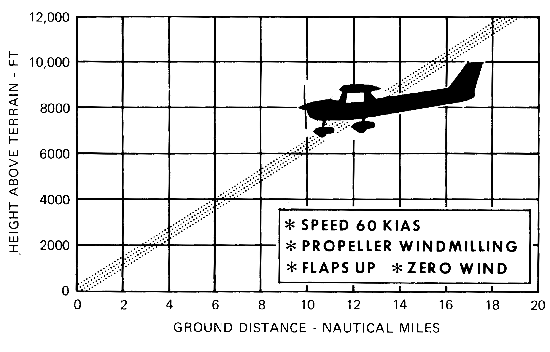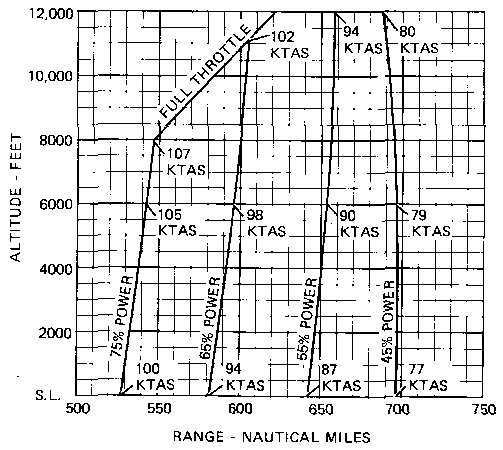Performances du Cessna 152Le Cessna 152 | Vol sur le Désert
|
||
| Distance au décollage | The distance you need to take off can be broken in two : first, the
ground roll, that is the distance you need to run on the runway until you leave ground,
and then the so called 50' distance, the distance you need to reach the altitude of 50'
(to avoid trees and buildings). Both dstances depend HEAVILY on the temperature, altitude,
wind, and runway type, with some other less important factors also. That being said, by a normal day on a paved runway, you could be able to take off with a ground roll of as little as 250 m. (750') and a total distance over a 15m. (50') obstacle of 420 m. (1400'). But if for example you took off from a hot and high airport like Grand Canyon, with say a temperature of 30°C and an altitude of 2000m (6000 '), a low pressure and little tailwind, you would probably need much more than the 450 m. (1500') of ground roll and 900m. (2900') indicated in the POH. |
|
| Distance d'atterrissage | It depends much on how much wind you've got and in which direction, and how slippery the runway is. If the runway is concrete and dry, there's no wind and you're a proficient pilot, you could land the plane safely in as little as 150m. (500'). Note that is your are lucky enough to have a strong, stable wind blowing in the exact direction of the runway, you could land in a few meters. I've heard stories of pilots who landed in Carcassone (France) with a head wind so strong that they were actually about to fly with a negative speed relative to the ground (that is, going back),while maintaining a safe speed relative to the air. | |
| Parachute et planer | .I have never heard of a Cessna 152 equipped with a parachute. So, what if the engine stops ? The answer is that you can fly over very long distances with the engine turned off. For example, if you are flying at 2000m. (6000') when the engine stops, you still have 10 NM (18 km) to find a convenient road, field or roof to land on. | |
From the Pilot Operating Handbook |
||
| Portée | The range is the longest distance you can fly under given conditions. A 152 with long range tanks could fly as far as 690 NM (1200 Km or 800 miles), but to to do that you'd have to climb to 10'000', reduce the power and fly for 8.7 hours ... a very long time in a 152. The farther you want to fly on a given fuel, the slower you'll have to fly. And as you pay the plane by the hour, unless you're trying to cross the Atlantic, there's really no reason to to that. At more reasonable flying parameters, say 75 % power at 8000', you'll still be able to fly 540 NM (1000 Km or 630 miles | |
|
||
| Vitesse de croisière | Speed is the single most important thin g when flying. Too low, you fall, too fast you destroy the structure while flying and you crash the plane when landing. If you do not fly yet, all you probably want to know is the cruising speed, which, as usual depends on a lot of things, but I usually fly between 100 and 110 Knots (that is, 190 Km/h or 115 mph). You have to remember that this speed, like every other here, is the speed relative to the air, not the ground. If you are flying in a mass of air that itself is moving 20 Knots in the same direction, then you're flying 20 Knots faster relative to the ground. | |
| Vitesse de montée | If you want to go up, you pull the wheel toward you and the airplane slows down while it climbs (after all the energy has to come from somewhere). If you want to climb the fastest, you'll aim for the so called Vy, or Best Rate-of-Climb Speed, 67 knots. If you have a tree coming in front of you, and you want to climb the quickest relatively to the ground, then you'll use the Vx, Best-Angle-of-Climb Speed, 55 knots. | |
| Vitesse de décrochage | It's speed that makes you fly. Under a certain speed you stop flying. If you're high as it happens, you can regain some speed quickly by pushing the wheel, but if you are close to the ground, during take-off or landing, you usually die. So remember this speed, 40 knots, under which you fall. If you have flaps out, you can fly at 35 knots without stalling. When you are about 5 knots from stalling, a horn starts blowing to warn you. Better listen to it. | |
|
||

